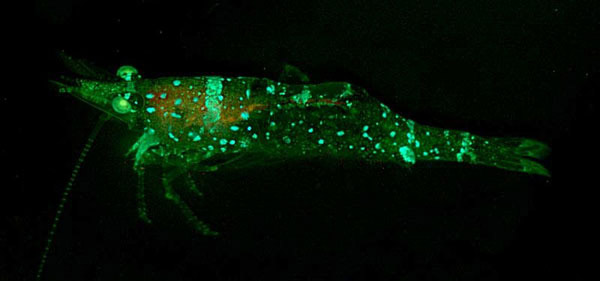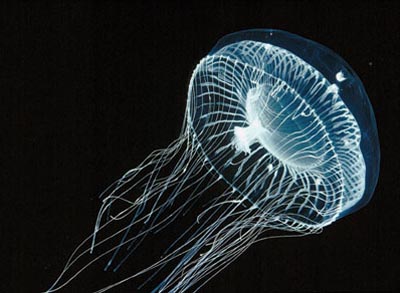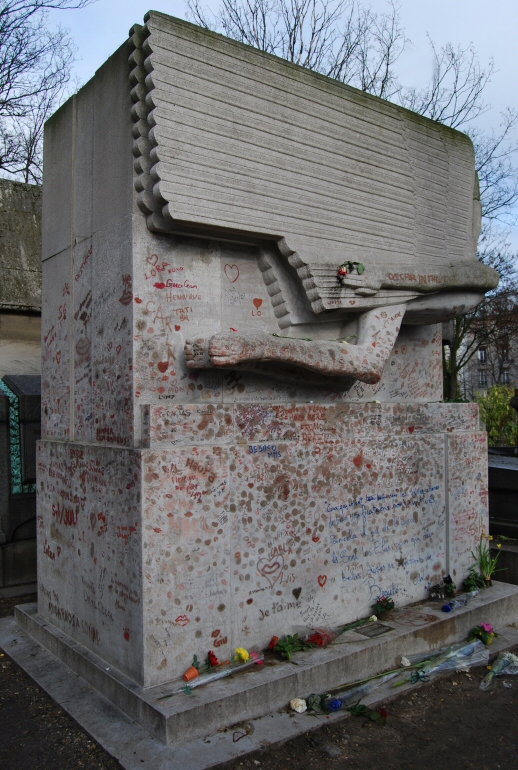This is a collection of research from Biomimicry students in various Departments of Architecture, Design and Art in Sweden. The schools involved are: Chalmers University (Gothenburg), KTH and Konstfack (Stockholm). The tutor responsible for the courses is Anna Maria Orru who has been teaching and working in Sweden with Biomimicry since 2010, and in London since 2003.
Tuesday, 21 February 2012
Manuel DeLanda: Nature, Space, Society
This talk is part of a discussion series consisting of three sessions on the relationships between society, space and nature, and how they are currently being transformed both theoretically and by technological and environmental changes in the world. (05.03.2004)
Labels:
week 1
Thursday, 16 February 2012
Monday, 13 February 2012
Sunday, 12 February 2012
"Dialoge with Lucinda" and Flocking
Yesterday evening I saw these two dance performances:
Nicole Beutler remade two dance pieces from Lucinda Childs (look up).
These two beautiful pieces made me think of the flocks of starlings:
- Their movement is based on simple rules.
- They never bump into each other.
- It is beautiful and mesmerizing to watch.
Also "flocking" is a dance technique where dance is created by the same rules as birds flock.
A wikipedia link: http://en.wikipedia.org/wiki/Flocking_(behavior)
Nicole Beutler remade two dance pieces from Lucinda Childs (look up).
These two beautiful pieces made me think of the flocks of starlings:
- Their movement is based on simple rules.
- They never bump into each other.
- It is beautiful and mesmerizing to watch.
Also "flocking" is a dance technique where dance is created by the same rules as birds flock.
A wikipedia link: http://en.wikipedia.org/wiki/Flocking_(behavior)
Thursday, 9 February 2012
A Molecular dance in the blood
I don't knew if I got any smarter but it made me want to understand what they are doing.
Suppose a man born blind, and now adult, and taught by his touch to distinguish between a cube and a sphere of the same metal, and nighly of the same bigness, so as to tell, when he felt one and the other, which is the cube, which is the sphere. Suppose then the cube and the sphere placed on a table, and the blind man made to see: query, Whether by his sight, before he touched them, he could now distinguish and tell which is the globe, which the cube? To which the acute and judicious proposer answers: ‘Not. For though he has obtained the experience of how a globe, and how a cube, affects his touch; yet he has not yet attained the experience, that what affects his touch so or so, must affect his sight so or so…’
What Darwin newer knew
Link to the program what Darwin newer know, http://youtu.be/I91Huv4jbCk A lot of good information about how gene regulators work.
Wednesday, 8 February 2012
Aggregation
Looking at system aggregation after a talk with a specialist in cellulose research.
This however is a "Dictyostelium Discoideum", which has an interesting behaviour of forming a slug.
From Wikipedia: "Under the social cycle, amoebae aggregate to cAMP by the thousands, and form a motile slug, which moves towards light. Ultimately the slug forms a fruiting body in which about 20% of the cells die to lift the remaining cells up to a better place for sporulation and dispersal. Under the sexual cycle, amoebae aggregate to cAMP and sex pheromones, and two cells of opposite mating types fuse, and then begin consuming the other attracted cells. Before they are consumed, some of the prey cells form a cellulose wall around the entire group. When cannibalism is complete, the giant diploid cell is a hardy macrocyst which eventually undergoes recombination and meiosis, and hatches hundreds of recombinants."
This however is a "Dictyostelium Discoideum", which has an interesting behaviour of forming a slug.
From Wikipedia: "Under the social cycle, amoebae aggregate to cAMP by the thousands, and form a motile slug, which moves towards light. Ultimately the slug forms a fruiting body in which about 20% of the cells die to lift the remaining cells up to a better place for sporulation and dispersal. Under the sexual cycle, amoebae aggregate to cAMP and sex pheromones, and two cells of opposite mating types fuse, and then begin consuming the other attracted cells. Before they are consumed, some of the prey cells form a cellulose wall around the entire group. When cannibalism is complete, the giant diploid cell is a hardy macrocyst which eventually undergoes recombination and meiosis, and hatches hundreds of recombinants."
Sunday, 5 February 2012
Friday, 3 February 2012
Microbial Home
“Microbial Home” is a project done by Philips Design Probes, which is a far future research program of Philips. Philips Design Probes was established to explore far future lifestyle scenarios based on rigorous research in a wide range of areas. Their projects aim to spark discussion and debate around new ideas and lifestyle concepts.
The Microbial Home probe adopts a systemic approach to many of the domestic processes we take for granted and asks questions about how we deal with resources. It is a proposal for an integrated cyclical domestic ecosystem where each function’s output is another’s input. It views the home as a biological machine to filter, process and recycle what we conventionally think of as waste – sewage, effluent, garbage and waste water.
The Microbial Home probe consists of 7 concept items: this infograpic shows how all concepts work together within a domestic setting.
Bio-digester Island; the central hub in the Microbial Home system consists of a methane digester which converts toilet waste solids and vegetable trimmings into methane gas that is used to power a series of functions in the home.
Larder; an evaporative cooling and vegetable storage system.
Bio Light; a concept that explores the use of bioluminescent bacteria, which are fed with methane and composted material.
Filtering Squatting toilet; a waste separating squatting toilet that filters effluent while channelling excreta to a methane digester in the Microbial Home system.
Urban Beehive; a concept designed for keeping bees at home and to create an urban refuge for bees as global bee colonies are in decline.
Paternoster; a concept for a domestic (or school) plastic waste up-cycler that uses mycelium to break down plastic packaging waste.
Apothecary: a concept developed for slow-diagnosing at home using 4 diagnostic tools.
I could go into more detail on all these concept but after Laura’s post on bioluminescence it might be nice to show more of the Bio-light, which is exactly about this.
The bio-light uses different biological technologies to create ambient light effects. The concept explores the use of bioluminescent bacteria, which are fed with methane and composted material (drawn from the methane digester in the Microbial Home system).
Alternatively the cellular light array can be filled with fluorescent proteins that emit different frequencies of light.
This concept has been created using a technique where individual cells are hand-blown into a steel frame which is freestanding or hung on the wall. Each cell is connected via silicon tubes to the food source (which is drawn from a reservoir at the base) creating a closed loop system for the living material.
This represents a new genre of ‘living’ biological products. Potentionally these products could be self-energizing, adaptive, responsive, self-repairing, act as biological sensors to environmental conditions, and change the way we communicate information.
The Microbial Home probe consists of 7 concept items: this infograpic shows how all concepts work together within a domestic setting.
Larder; an evaporative cooling and vegetable storage system.
Bio Light; a concept that explores the use of bioluminescent bacteria, which are fed with methane and composted material.
Filtering Squatting toilet; a waste separating squatting toilet that filters effluent while channelling excreta to a methane digester in the Microbial Home system.
Urban Beehive; a concept designed for keeping bees at home and to create an urban refuge for bees as global bee colonies are in decline.
Paternoster; a concept for a domestic (or school) plastic waste up-cycler that uses mycelium to break down plastic packaging waste.
Apothecary: a concept developed for slow-diagnosing at home using 4 diagnostic tools.
Thursday, 2 February 2012
Insider chemist jokes
At the lunch break the other day, Max asked if we scientists have our own insider humor. Oh boy, do we! So here I will post a little walk scape through this important social aspect.
Here are some of my favorite science jokes. First out is a translation to (almost cliché) phrases in a typical scientific paper.

One thing I like and use a lot with my students, LOL cats! (about Scrödinger´s cat

For more LOL cat chemistry, click here.
And this one is perhaps not so scientific, but I recognize myself in it to some extent.

/Dina
Here are some of my favorite science jokes. First out is a translation to (almost cliché) phrases in a typical scientific paper.

One thing I like and use a lot with my students, LOL cats! (about Scrödinger´s cat

For more LOL cat chemistry, click here.
And this one is perhaps not so scientific, but I recognize myself in it to some extent.

/Dina
Wednesday, 1 February 2012
Basics of Bioluminescence
Bioluminescence is the light produced by a chemical reaction that occurs in an organism.
Bioluminescence is the only source of light in the deep ocean where sunlight does not penetrate. Amazingly, about ninety percent of the organisms that live in the ocean have the capability to produce light.
Most bioluminescence is blue for two reasons. First, blue-green light travels the farthest in water. Second, most organisms are sensitive to only blue light. They do not have the visual pigments to absorb the longer or shorter wavelengths. As with every rule, exceptions exist. Some cnidarians emit green light and one family of fish, the Malacosteids (known as the Loosejaws) emit and are able to see red light. The red light they produce is almost infrared and not visible to the human eye. This is a huge advantage to these fish because they can produce light to see their prey, but their prey can not see them!

The luminescence of photosynthetic dinoflagelletes is very much influenced by the intensity of the previous days sunlight. The brighter the sunlight, the brighter the luminescence will be. In most multi-cellular organisms, the ability to produce light is controlled neurally. However, the transmitter that signals the change to take place is unknown in most organisms.
All bioluminescent reactions occur in the presence of oxygen. Two types of chemicals are required- a luciferin and a luciferase (lucifer means light bringing). The luciferin is the basic substrate of the reaction and produces the light. The luciferase catalyzes the reaction. In the basic reaction, the luciferase catalyzes the oxidation of luciferin, which results in two products- light and inactive oxyluciferin. Most of the energy released in this reaction occurs in the form of light, therefore, bioluminescence is commonly called “cold light.”
Five main types of luciferins are known.
1.Bacterial Luciferin is a reduced riboflavin phosphate and found in bacteria, some fish, and squid.

2. Dinoflagellate Luciferin is thought to be derived from chlorophyll because it has similar structure and is found in dinoflagellates and euphasiid shrimp.

3. Vargulin, is found in the ostracod Vargula and is also used by the midshipman fish Poricthys. This is an interesting dietary link because the fish can not luminesce until they are fed luciferin bearing food.
4. Coelenterazine is the most common luciferin; it is found in many phyla- the radiolarians, ctenophores, cnidarians, squids, copepods, chaetognaths, and some fish and shrimp.

5. Firefly luciferin, which requires ATP as a cofactor in its reactions.


Subscribe to:
Posts (Atom)












